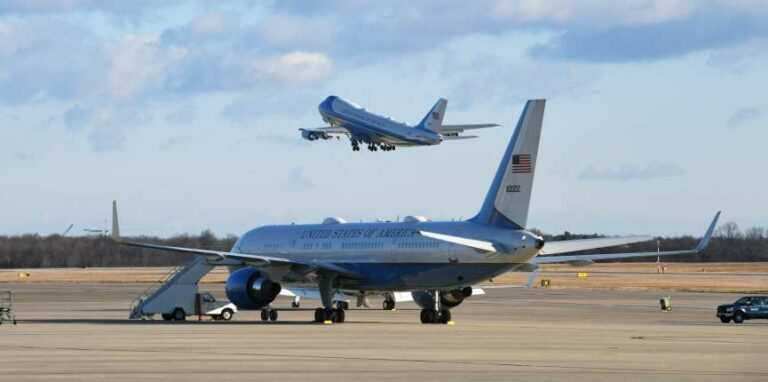
Boeing is struggling to find enough qualified employees to work on the newest version of the Air Force One presidential aircraft ordered by former President Donald Trump.
A new report by the Government Accountability Office (GAO) published on Wednesday detailed the four major risks that could prevent an on-time delivery of the new Air Force One model, which is a modified version of the Boeing 747-8 known as the VC-25B. One of the most important factors that could force a delay on the new aircraft is simply getting enough employees with the necessary security clearances to work on the highly sensitive aircraft.
The GAO attributed a competitive labor market and “lower-than-planned” security clearance approval rates to raising this risk factor.
“Employees must meet stringent security requirements to work on the VC-25B program because of its presidential mission,” the GAO report states.
Officials overseeing the VC-25B project officials said Boeing “continues to
work with the program office to improve the prescreening process for applicants to ensure timely processing of security clearances.”
Defense One reported Boeing has never explicitly stated it doesn’t have enough workers for the two planned VC-25Bs, but the company has continued to advertise job openings for the project since at least 2020. In 2020, Defense One reporter Marcus Weisgerber noted that amid a layoff of 12,000 Boeing employees, the company had listed openings for jobs including “general aircraft mechanic,” “manufacturing engineer” and “quality inspector.”
Boeing’s hiring website still lists at least 11 openings specifically related to the VC-25B program.
The contract to build the two VC-25Bs started with converting two already built Boeing 747-8 jetliners. Since then, the company has run into several problems and has reportedly already lost more than $1.1 billion on the project contract.
The other factors impacting the on-time completion of the two new VC-25B aircraft include a change in supplier for the interior accommodations, sorting out the complex wiring for the two aircraft and completing necessary ground and in-flight systems tests on time.
According to the GAO, the VC-25B has over 2,000 wire bundles spanning 200 miles of wire, which is more than double that of the standard commercial Boeing 747 aircraft.
“Wiring must meet a broad set of complex requirements from electrical protection to proper separation, according to VC-25B officials,” the GAO report states. “They explained that Boeing is leveraging lessons learned
from the Boeing-developed KC-46 tanker in order to avoid on-aircraft wiring issues. According to VC-25B officials, while this takes more time, it increases their confidence in the wiring integration plans.”
The issue with the interior accommodations for the aircraft was also a major source of the project delays. According to the GAO, the change in supplier for the interior accommodations caused Boeing to assess a delay of at least a year for the aircraft.
0 comments :
Post a Comment